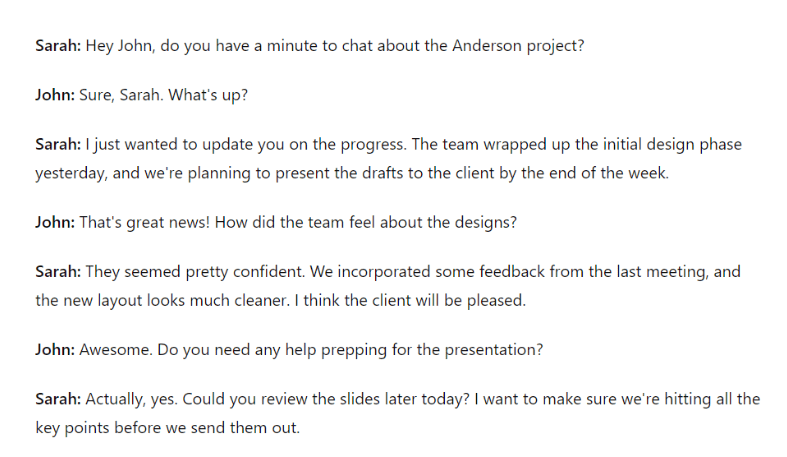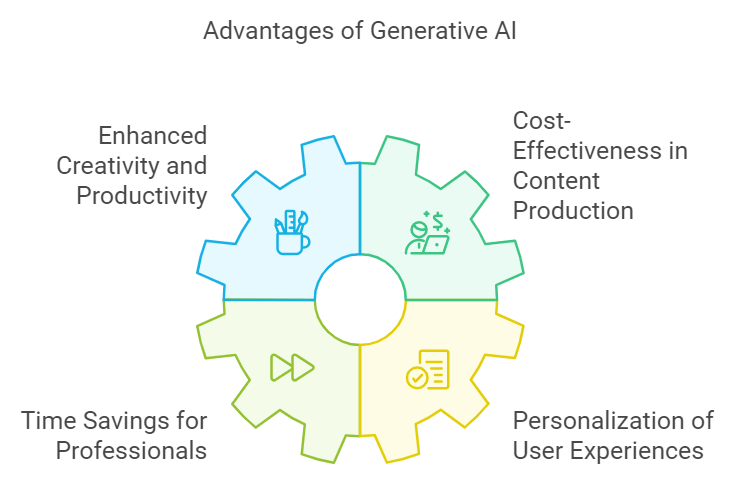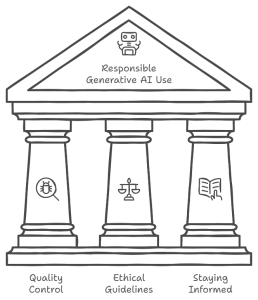Understanding Generative AI: The Future of Creativity and Innovation
Generative AI is revolutionizing the way we create and interact with technology. Unlike traditional AI, which focuses on analyzing and interpreting data, Generative AI is designed to create new content, whether it’s text, images, music, or even software code. This technology is becoming increasingly important in today’s digital landscape, powering innovations across industries like marketing, design, healthcare, and more. In this article, we’ll dive deep into what Generative AI is, how it works, and the impact it’s having on various fields.
What is Generative AI?
Generative AI refers to a category of artificial intelligence that is capable of generating new content by learning from existing data. Unlike traditional AI, which primarily classifies or predicts data, Generative AI creates new data that shares similarities with the training data it’s learned from.
How it differs from traditional AI:
Traditional AI is often task-specific and reactive—it analyzes inputs and provides outputs based on predefined rules or learned patterns. Generative AI, however, is proactive, creating entirely new outputs that mimic the characteristics of its training data.
Key components and technologies involved:
Two of the most important technologies in Generative AI are:
- Neural Networks: These are computer systems modeled after the human brain, enabling AI to recognize patterns and generate new content.
- Machine Learning: A subset of AI where systems improve their performance by learning from data without being explicitly programmed.
How Does Generative AI Work?
Generative AI operates through sophisticated algorithms that allow it to learn from large datasets and then create new, similar content. The two most common algorithms used in Generative AI are Generative Adversarial Networks (GANs) and Variational Autoencoders (VAEs).
GANs involve two neural networks: a generator and a discriminator. The generator creates new data, while the discriminator evaluates how closely this new data matches the original training data. Through continuous feedback, the generator improves its ability to produce realistic outputs. VAEs, on the other hand, work by compressing data into a lower-dimensional space and then reconstructing it, enabling the generation of new content that is similar to the original data.
The training process for Generative AI involves feeding it vast amounts of data, such as images, text, or music. The AI learns the underlying patterns within this data and uses them to create new outputs. For example, a text-generating AI might be trained on thousands of books to learn how to generate coherent sentences, while an image-generating AI could be trained on millions of photos to create realistic images.
Applications of Generative AI
Generative AI has a wide range of applications across different industries, transforming how businesses and creatives approach content creation.
- In content creation, Generative AI can produce articles, blogs, marketing copy, and social media posts. It allows businesses to scale their content production and tailor it to specific audiences, enhancing engagement and reach.
- In art and design, AI tools like DALL·E and Midjourney enable artists to generate unique visuals, whether for abstract art, realistic renderings, or graphic design projects. Digital artists can leverage these tools to push the boundaries of creativity and explore new styles.
- Music and audio creation is another area where Generative AI excels. AI-driven platforms can compose original music or generate soundscapes, offering musicians and producers new ways to experiment with sound and composition.
- In software development, Generative AI assists in code generation and debugging. It can write code snippets, automate repetitive tasks, and help developers identify and fix errors more efficiently.
- The healthcare industry also benefits from Generative AI, particularly in drug discovery and patient data analysis. AI can analyze vast datasets to identify potential drug candidates or provide insights into patient health, leading to more personalized and effective treatments.
- In gaming, Generative AI is used to create game levels, characters, and narratives. It allows game developers to generate diverse and engaging content, enhancing the player experience and reducing development time.
The Top 5 Generative AI tools for your every need
Text:
Description: ChatGPT is one of the most advanced language models built by OpenAI, based on the GPT-4 architecture. It’s widely used for generating human-like text, answering questions, and even assisting with tasks like writing code or generating creative content.
Pros:
- Highly versatile for multiple applications (e.g., conversational agents, content writing, customer support).
- Strong at handling a wide range of tasks, from technical assistance to casual conversations.
- Large-scale model trained on a diverse dataset, leading to high-quality and coherent responses.
Cons:
- Can sometimes produce verbose or overly generic answers.
- Prone to factual inaccuracies or hallucinations, as it doesn’t “understand” facts.
- Limited access in its free version; premium features come with a cost.
2) Claude (Anthropic)
Description: Claude, developed by Anthropic, focuses on being a more “aligned” and ethical AI system. It’s designed to be safe, easy to interact with, and effective for a variety of natural language processing tasks.
Pros:
- Prioritizes safety and ethical considerations, reducing harmful or biased outputs.
- User-friendly interface with a focus on handling complex queries without veering into sensitive topics.
- Known for more nuanced responses, making it good for conversations requiring sensitivity.
Cons:
- Slightly less powerful than GPT-4 in generating long, complex texts or technical outputs.
- Smaller user base and less widespread adoption, so fewer community tools and resources.
- May not always handle highly specialized queries as well as GPT-based systems.
3) Perplexity AI
Description: Perplexity AI is a text generation tool that uses search-based generative models to provide accurate and up-to-date responses. It’s well-suited for answering queries by sourcing information from the web.
Pros:
- Offers fact-based responses by citing sources and searching the web for the latest information.
- Ideal for users who want accurate, reliable answers with references.
- Fast and responsive, with a simple interface suitable for quick searches and information retrieval.
Cons:
- Lacks creative or conversational depth compared to other AI tools (more factual than imaginative).
- Search dependency means it can struggle with queries that require more abstract or creative thought.
- Can only generate text based on current search results, limiting its ability to provide imaginative responses.
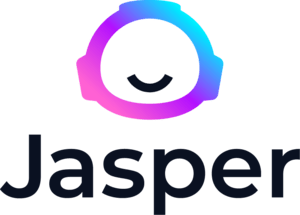
4) Jasper AI
Description: Jasper AI is a content generation tool designed specifically for marketing, copywriting, and business content creation. It’s aimed at professionals and teams looking to automate their content production at scale.
Pros:
- Tailored for marketing professionals, with specialized templates for ads, blogs, product descriptions, etc.
- Easy to use for scaling content production, with built-in tone settings to match brand voice.
- Great at creating SEO-friendly content, ideal for websites and businesses looking to improve search rankings.
Cons:
- Focused on business content, so not as versatile for other applications (e.g., casual conversation or technical queries).
- Expensive, with higher-tier pricing for advanced features and better outputs.
- May require heavy editing to ensure the content matches the desired tone and style.

5) Copy.ai
Description: Copy.ai is another AI writing tool designed to help marketers, writers, and entrepreneurs create content. It’s known for generating various types of content, including product descriptions, emails, and social media posts.
Pros:
- User-friendly interface, making it simple for non-technical users to generate content.
- Provides templates for different types of writing, speeding up the content creation process.
- Particularly strong at short-form content like social media captions or product descriptions.
Cons:
- Can struggle with long-form content, requiring users to break down tasks into smaller chunks.
- Quality may be inconsistent, particularly for complex topics.
- Limited customization options, so generated content may feel generic or repetitive.
Conversation in a professional setting – Generated by ChatGPT, OpenAI
Images:

1) DALL·E 3 (OpenAI)
Description: DALL·E 3 is a cutting-edge AI model developed by OpenAI that generates high-quality images from text prompts. It’s capable of producing detailed and creative visuals, ranging from realistic to abstract styles.
Pros:
- Generates highly detailed and complex images from simple text prompts.
- Versatile in styles, capable of producing everything from photorealistic images to highly imaginative artwork.
- Seamless integration with other OpenAI tools like ChatGPT, making it easy to generate and edit images.
Cons:
- Can sometimes produce unexpected or incorrect visual elements based on ambiguous prompts.
- Computationally intensive, leading to delays in generation time for more complex images.
- Limited free access, with premium features requiring payment.
2) Midjourney
Description: Midjourney is an AI-powered art generator that specializes in creating artistic, stylized images from user prompts. It’s particularly popular in the art and design community for generating visually stunning artwork.
Pros:
- Known for producing highly stylized, unique, and visually stunning artwork.
- Excellent for artists and designers looking to explore new creative styles or ideas.
- Easy to use with a simple prompt-based input, offering creative freedom.
Cons:
- Less suited for realistic or business-related graphics (focuses on artistic styles).
- Requires a Discord account for access, limiting its reach to users familiar with the platform.
- Premium subscription needed for full access to advanced features.

3) Canva Magic Media
Description: Canva’s Magic Media, powered by generative AI, is integrated into the Canva design platform. It allows users to generate custom images and graphics based on text prompts within the Canva interface.
Pros:
- Seamless integration with Canva, making it easy to use for designing presentations, social media posts, and marketing materials.
- Ideal for non-designers, offering an intuitive interface and pre-built templates.
- Versatile for both personal and professional use, from simple graphics to more complex visuals.
Cons:
- Limited creative flexibility compared to more specialized tools like Midjourney or DALL·E.
- Outputs can be simplistic and require further refinement, especially for professional-level designs.
- Some features are locked behind Canva’s Pro subscription.
![]()
4) Runway ML
Description: Runway ML is a creative suite designed for AI-powered video, image, and 3D content creation. It’s often used by designers, artists, and creatives for experimental and professional-grade content generation.
Pros:
- Versatile tool for generating not just images but also videos and 3D assets.
- Excellent for professionals in multimedia fields looking for AI to assist with creative projects.
- Provides a high level of customization and control over generated content.
Cons:
- More complex and may have a steeper learning curve compared to simpler tools like Canva.
- Expensive subscription plans for access to more advanced features.
- May not be the best choice for users looking for quick, simple images.

5) Artbreeder
Description: Artbreeder is a generative AI tool that allows users to create and blend images, including portraits, landscapes, and abstract designs. It uses genetic algorithms to combine and “breed” images into new forms.
Pros:
- Highly interactive, allowing users to tweak and blend images to create new visuals.
- Ideal for creating custom portraits, landscapes, and art by adjusting parameters like color, facial features, and more.
- User-friendly interface, making it easy for non-professionals to explore creativity.
Cons:
- Limited to image blending and manipulation, not generating entirely new images from scratch.
- Requires a lot of user input to achieve desired results, which can be time-consuming.
- Some features are restricted to paid tiers, limiting access to more advanced customization options.
“Minimalist illustration of house and trees” – Generated by Canva Magic Media
Videos:
![]()
1) Runway ML
Description: Runway ML is a creative platform that uses machine learning models for real-time video editing, visual effects, and video generation. It’s popular for both video professionals and digital artists.
Pros:
- Offers a variety of generative AI models for video editing, motion tracking, and style transfer.
- Ideal for professional-grade video editing, with real-time processing.
- Can be used for advanced visual effects, including background removal and object tracking.
Cons:
- Steeper learning curve compared to basic video editors.
- Some advanced features require significant computational power or a paid subscription.
- The tool may overwhelm beginners with its wide range of features.
2) Pictory
Description: Pictory is an AI-driven video creation platform that allows users to turn long-form content, such as blog posts or articles, into short videos. It’s designed for marketers and content creators looking to generate video quickly.
Pros:
- Fast and easy video creation from text, making it perfect for content marketers.
- Includes stock images, footage, and music to enhance the videos.
- Offers AI-powered transcription, summarization, and video generation.
Cons:
- Customization options are limited compared to more advanced video tools.
- Final video quality may not be as polished as professionally edited content.
- Paid plans are required for full feature access.

3) Synthesia
Description: Synthesia is a leading AI video creation tool that focuses on generating videos with human-like avatars. It is widely used for business purposes, including creating training videos, marketing content, and internal communications.
Pros:
- Simplifies the process of creating videos with AI avatars, eliminating the need for actors or camera equipment.
- Supports multiple languages and accents, making it great for global teams or international audiences.
- Offers a professional look with realistic avatars that mimic human speech and gestures.
Cons:
- Limited to avatar-based videos, lacking versatility for more creative or cinematic projects.
- Avatar movements can sometimes feel robotic or unnatural.
- Expensive for individual users or small businesses with tight budgets.
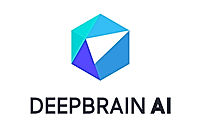
4) DeepBrain AI
Description: DeepBrain AI offers a platform for generating human-like AI videos, mainly used for business purposes such as corporate training, news broadcasting, and customer service automation. It also provides customizable AI presenters.
Pros:
- Delivers high-quality AI avatars with natural-looking speech and gestures.
- Ideal for corporate and training videos where lifelike AI presenters are needed.
- Supports multiple languages and integration into various business platforms.
Cons:
- Primarily suited for business use cases, not creative video production.
- Limited flexibility for more artistic or entertainment-driven projects.
- Requires higher investment for access to premium features.

5) Lumen5
Description: Lumen5 is an AI-powered video creation platform designed for marketers and social media content creators. It allows users to turn blog posts or text content into engaging videos by matching text with visuals and sound.
Pros:
- Very easy to use with a drag-and-drop interface, perfect for non-video professionals.
- AI suggests relevant visuals and soundtracks based on input content, saving time.
- Offers a variety of templates designed specifically for social media and marketing videos.
Cons:
- Limited customization for users who need high-end, professional-grade videos.
- Final video quality may not meet the standards for cinematic or detailed creative projects.
- Paid subscriptions are required for full access to premium content and features.
Music:

1) AIVA (Artificial Intelligence Virtual Artist)
Description: AIVA is an AI-powered music composition tool that allows users to create original soundtracks, classical compositions, and more. It’s widely used for creating music for games, films, and advertisements.
Pros:
- Specializes in classical and symphonic music, great for film scoring and orchestral compositions.
- Allows users to customize compositions by adjusting style, instruments, and mood.
- Can be used as a creative assistant for musicians looking to enhance their compositions.
Cons:
- Limited range outside of classical and orchestral genres.
- Custom compositions may still need human refinement for professional use.
- Premium features require a paid subscription.

2) Amper Music
Description: Amper Music is an AI-powered music composition tool designed for content creators and marketers to quickly generate royalty-free music for videos, podcasts, and other media.
Pros:
- Easy-to-use interface, allowing quick generation of music based on user inputs.
- Provides high-quality, royalty-free music that can be tailored to the desired mood and genre.
- Ideal for non-musicians looking to add background music to media content.
Cons:
- Less control over intricate composition elements, limiting creativity for professional musicians.
- The quality of music can feel generic compared to human-composed tracks.
- Subscription required for full access to music libraries and advanced features.

3) Boomy
Description: Boomy is a user-friendly AI music creation platform that allows anyone to generate and publish original music. It’s popular for casual users who want to make songs quickly and even release them on streaming platforms.
Pros:
- Very accessible, no music production experience required.
- Users can create music in minutes and publish it directly to streaming services like Spotify.
- Offers a wide variety of genres to experiment with.
Cons:
- The music can feel repetitive or lacking in depth for more advanced users.
- Limited customization for intricate compositions or specific production techniques.
- Features and song publishing are restricted under the free plan.

4) OpenAI’s Jukedeck (Now part of ByteDance)
Description: Jukedeck was an early leader in AI music generation, allowing users to create custom soundtracks for videos and games. After being acquired by ByteDance, its technology is being used in products like TikTok.
Pros:
- Generates royalty-free music tailored to the user’s needs, from mood to genre and tempo.
- Easy for content creators to quickly generate custom soundtracks.
- Strong integration with video platforms like TikTok, making it accessible for social media use.
Cons:
- Since being acquired by ByteDance, its standalone service is no longer available.
- Less accessible to individuals and more focused on large platforms.
- Not suited for creating highly complex or layered music.
Enrol Today
Begin your journey in mastering ChatGPT and AI Tools for Workplace today. Getting started is easy; just click an option below:

5) Soundraw
Description: Soundraw is an AI music generator designed for creative professionals who need royalty-free background music for videos, streams, and other digital content.
Pros:
- Focuses on customization, allowing users to adjust song structure, length, tempo, and mood.
- Offers a wide variety of genres and styles to suit different types of media content.
- Provides a straightforward, user-friendly interface for quick music generation.
Cons:
- Not ideal for creating complete tracks with high levels of complexity or nuance.
- Music may feel formulaic compared to professional composers’ work.
- Requires a paid subscription for access to full features and music downloads.
Benefits of Generative AI
Generative AI offers several advantages that are reshaping industries and driving innovation:
- Enhanced creativity and productivity: AI tools can generate content at a scale and speed that would be impossible for humans alone, allowing creatives to focus on higher-level tasks.
- Cost-effectiveness in content production: AI-generated content can reduce the need for extensive human resources, lowering production costs.
- Time savings for professionals: Automating content creation and design tasks saves time, enabling professionals to achieve more in less time.
- Personalization of user experiences: Generative AI can create personalized content tailored to individual preferences, enhancing user engagement and satisfaction.
Challenges and Limitations
Despite its benefits, Generative AI comes with its own set of challenges and limitations:
- Quality and originality concerns: AI-generated content may lack the nuance and originality of human-created work, leading to questions about its quality.
- Ethical considerations: Issues such as copyright infringement and the potential for generating misinformation are significant concerns in the AI community.
- Tech limitations: Generative AI models are dependent on the quality and diversity of the data they are trained on, which can lead to biases or limitations in the generated content.
- Regulatory and compliance issues: The use of AI in certain sectors is subject to regulation, and compliance can be complex, particularly in industries like healthcare and finance.
Career Opportunities in Generative AI
As Generative AI continues to evolve, so do the career opportunities associated with it. Here are some emerging roles:
- AI/ML Engineer: Focused on developing and refining AI models, particularly those involved in content generation.
- Data Scientist specializing in AI: These professionals analyze data and train AI models to ensure they are effective and accurate.
- AI Ethics Consultant: With ethical concerns on the rise, there’s a growing need for experts who can guide the responsible use of AI.
- Content Creator/Manager leveraging AI tools: Professionals who use AI tools to enhance their content creation processes and manage AI-generated content.
- Creative Technologist: A role that blends creativity with technology, utilizing AI to push the boundaries of what’s possible in digital media and design.
Skills and qualifications needed:
- Proficiency in programming languages like Python
- Understanding of machine learning algorithms
- Experience with neural networks and AI frameworks like TensorFlow or PyTorch
- Strong analytical skills and ethical awareness
The importance of continuous learning:
The AI field is rapidly evolving, making continuous learning and skill development crucial for anyone looking to build a career in this space.
Best Practices for Using Generative AI
To maximize the benefits of Generative AI while mitigating its risks, consider these best practices:
- Ensure quality control and human oversight: Always review AI-generated content for accuracy, quality, and relevance.
- Follow ethical guidelines: Be mindful of the ethical implications of using AI, particularly when it comes to issues like data privacy, copyright, and misinformation.
- Stay informed: Keep up with the latest developments in AI to ensure you’re using the most effective and responsible tools available.
Future of Generative AI
The future of Generative AI is promising, with ongoing advancements expected to further enhance its capabilities. As AI technology continues to improve, we can anticipate more sophisticated models capable of generating even higher-quality content. The impact of Generative AI will likely be felt across various industries, including marketing, education, and entertainment, where it will automate tasks, enhance creativity, and improve efficiency. However, the evolving role of humans in AI-driven environments will remain crucial, as human oversight and ethical considerations will be essential to ensuring that AI is used responsibly and effectively.
Frequently Asked Questions (FAQs)
What is the difference between Generative AI and traditional AI?
Generative AI creates new content, while traditional AI focuses on analyzing existing data and making predictions.
How is Generative AI used in content creation?
Generative AI can write articles, generate marketing copy, and create social media content, among other tasks.
Can Generative AI create original art or music?
Yes, Generative AI tools can compose music and create visual art, often producing results that are indistinguishable from human-made work.
What are some popular Generative AI tools available today?
Tools like DALL·E, GPT-3, and various AI-driven music composition platforms are popular for their ability to generate text, images, and audio.
How does Generative AI improve business processes?
By automating content creation and design tasks, Generative AI saves time and reduces costs, allowing businesses to operate more efficiently.
Is Generative AI ethical and safe to use?
While Generative AI is a powerful tool, ethical concerns must be considered, including potential issues with copyright and misinformation.
What are the risks associated with using Generative AI?
Risks include the creation of biased content, misinformation, and potential ethical violations related to data usage.
What educational pathways exist for careers in Generative AI?
Educational programs in computer science, data science, and AI are ideal for those looking to enter this field, with additional specialized courses in machine learning and neural networks.
How can businesses integrate Generative AI into their operations?
Businesses can start by adopting AI tools for content creation, design, and customer engagement, ensuring they have the right talent and oversight to manage these technologies.
Generative AI is transforming industries by enabling the creation of content, art, music, and more. Understanding how Generative AI works and the opportunities it offers is essential for staying ahead in today’s tech-driven world. Businesses and individuals can unlock new levels of creativity, productivity, and innovation by leveraging AI responsibly. The future is AI-driven, and those who embrace it will lead the way in shaping the digital landscape.



